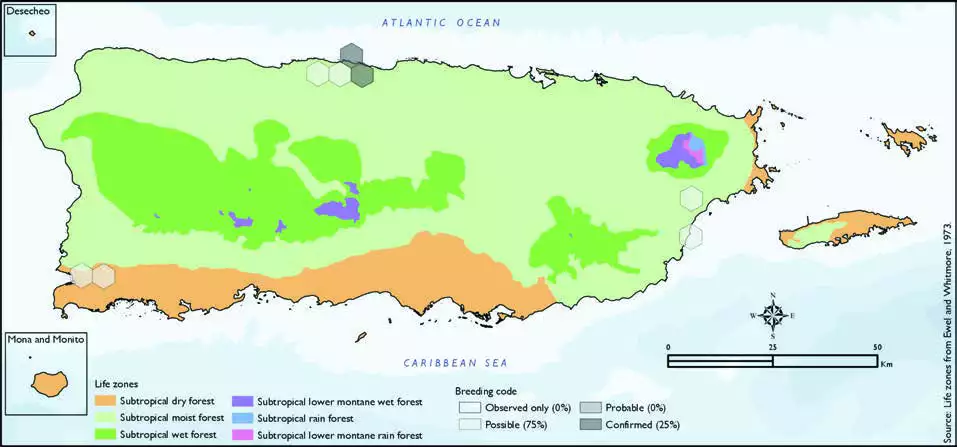Yellow-breasted Crake
Description
The yellow-breasted crake (Laterallus flaviventer) is a species of bird in the family Rallidae. It was formerly sometimes placed in the obsolete genus Poliolimnas or united with the Ocellated crake in Micropygia, and is now occasionally separated in a monotypic genus Hapalocrex. Phylogenetic analyses of mitochondrial DNA revealed that it is not a part of Porzana proper, and instead belongs within the Coturnicops–Laterallus clade. While its precise relationships are still insufficiently resolved, it is not closely related to Micropygia, and Stervander et al. (2019) suggested that it should be referred to as Laterallus flaviventer pending further data.
Distribution & Habitat
The Yellow-breasted Crake is a species that occurs from
Mexico through South America
including the Greater Antilles
in the Caribbean, where it is an
uncommon resident on Cuba,
Jamaica, and Puerto Rico, and
rare on Hispaniola (Raffaele and
others 1998). In Puerto Rico,
it has been reported mostly
from the Humacao (Vilella
and others 2011), Boquerón,
Caño Tiburones, and Laguna
Cartagena wildlife refuges
(Oberle 2018). Habitat includes
mostly freshwater wetlands and
canals with edges of short grass
or other aquatic plants (Raffaele and others 1998), as well as
marshes, pond edges, fl ooded
fields, and ditches with dense
vegetation (Oberle 2018). The
atlas fieldwork yielded a total of
11 records within eight hexagons
or 1.6 percent of the 479 total
hexagons (see map). Of the eight
hexagons where this species was
found, breeding met the atlas
definition of confirmed in 25
percent (two) of the hexagons
and possible in 75 percent (six)
of the hexagons (see map).
Low numbers of reports are
not surprising as many rails
and crakes are skulkers have
crepuscular habits.Yellow-breasted Crake distribution. The map shows the highest breeding code by hexagon and overlaying the ecological life zones
in Puerto Rico. Note: percentages may not total 100 due to rounding. 93Yellow-breasted Crake/Gallito Amarillo

Breeding Habits
Previously published reports indicate that the Yellow-breasted
Crake breeds primarily from
March to June (Raffaele and
others 1998, Vilella and others
2011). The nest is woven on
fl oating vegetation or reeds
(Oberle 2018, Raffaele and
others 1998, Vilella and others
2011). Of the 15 nests found in
the Humacao refuge, two were
located in May and November
of 2001, and the remaining 13
nests were located from January
to July 2001 (Vilella and others
2011). Atlas results suggest that
this species breeds mostly from
March to May, although there might be scattered breeding
activity during other months
such as January, September,
and December (see chart). The
breeding activity peaks in March,
and it mostly takes place within
the subtropical moist forest
life zone (75 percent of the
hexagons) (see chart and table).
However, results indicate that it
may also breed in the subtropical
dry forest life zone (25 percent
of the hexagons) (see table
and map).
Conservation
The global population trend of the Yellow-breasted Crake
is increasing (Wetlands International 2012), although
some populations are stable
(Butcher and Niven 2007). This
species is currently listed as a
species of least concern by the
IUCN (BirdLife International
2016). Locally, this species is not
listed in any of the threatened
categories of PRDNER and
USFWS. In Puerto Rico, the
Yellow-breasted Crake has a
protected habitat in land of 17
percent or 33 km2 of the total area covered by the hexagons
where evidence of breeding was
found for this species (191 km2).
Related Species
Family:
rail